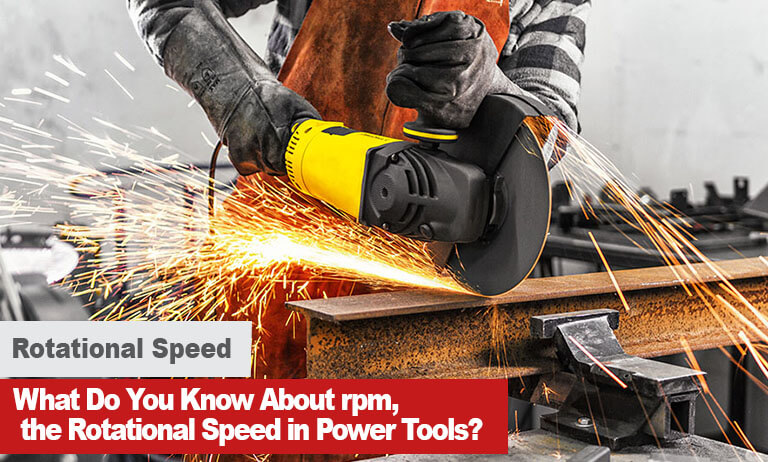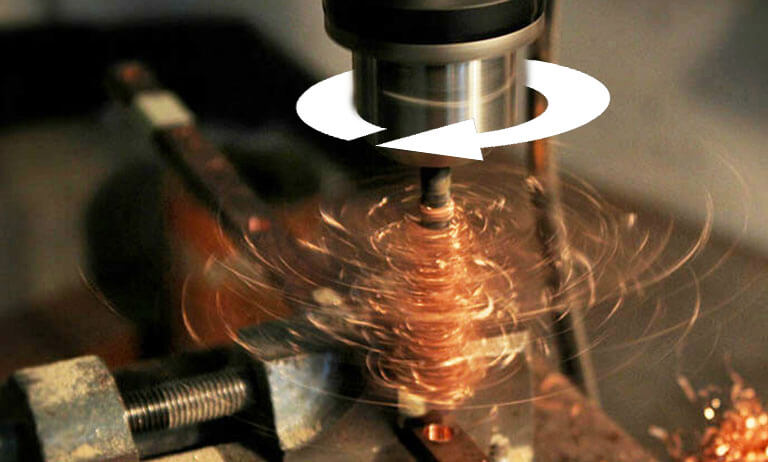If you’ve ever used power tools, you may have come across the term “rpm.” But what exactly is rpm in power tools? Well, let’s break it down.
Rpm stands for “revolutions per minute,” and it refers to the speed at which a power tool’s bit or blade rotates.
Now, you might be wondering, why is rpm important? The speed at which a power tool operates can affect its performance and the quality of the work you do. So, understanding rpm is crucial for using power tools effectively and safely.
In this article, we’ll delve deeper into what rpm means, how it impacts different power tools, and why it matters in various applications. So, buckle up and get ready to unravel the mysteries of rpm in power tools!

What is RPM in Power Tools?
When it comes to power tools, you might have come across the term RPM. But what does RPM actually mean? RPM stands for “Revolutions Per Minute” and is a unit of measurement used to determine the rotational speed of a power tool. In simpler terms, RPM tells you how fast the tool’s motor is spinning. Understanding RPM is essential for using power tools safely and efficiently. In this article, we will delve into the details of RPM in power tools, its significance, and how it affects the performance of different tools.
The Significance of RPM in Power Tools
RPM plays a crucial role in determining the efficiency and effectiveness of power tools. Different power tools have different optimal RPM ranges, and operating them within these ranges is essential for maintaining their performance and longevity. If a tool is operated at too low an RPM, it may not have enough power to complete the task efficiently. On the other hand, operating a tool at too high an RPM can lead to overheating, excessive wear and tear, and even pose a safety risk. RPM is especially important in tools like drills, saws, grinders, and sanders, where the rotational speed directly affects the tool’s cutting, drilling, or sanding capabilities.
Understanding RPM in Power Tools
Understanding RPM in power tools requires knowledge of the tool’s purpose and the materials it will be used on. Let’s take a drill as an example. Most drills have a variable speed feature that allows you to adjust the RPM to suit different applications. Higher RPM is ideal for drilling into softer materials like wood, while lower RPM is suitable for harder materials like metal. By adjusting the RPM accordingly, you can achieve optimal performance and prevent damage to the tool or workpiece. It’s crucial to refer to the manufacturer’s guidelines or the tool’s user manual to determine the appropriate RPM for specific tasks.
The Impact of RPM on Tool Performance
The RPM of a power tool directly affects its performance. Higher RPM generally means faster cutting or drilling speeds, but it can also make the tool more challenging to control. For tasks that require precision, it’s advisable to use a lower RPM to maintain accuracy. On the other hand, tasks that involve removing material quickly may call for higher RPM settings. It’s essential to strike a balance between RPM and the nature of the task at hand. Additionally, some power tools, such as angle grinders, have adjustable guards or speed settings that allow you to control the RPM for specific applications. Familiarize yourself with these features to harness the full potential of your tools.
Tips for Using Power Tools with RPM
To make the most of power tools, here are some tips for utilizing the RPM feature effectively:
1. Refer to the manufacturer’s guidelines: Always consult the tool’s user manual or go online to find information about the recommended RPM range for various applications.
2. Start slow: If you’re unsure about the optimal RPM for a specific task or material, start with a lower RPM and gradually increase it until you achieve the desired results.
3. Experiment with different RPM settings: Depending on the material, depth, or desired finish, try adjusting the RPM to find the sweet spot that offers both efficiency and precision.
4. Practice proper safety measures: Whenever working with power tools, ensure you wear appropriate protective gear, operate the tool with care, and follow safety guidelines to avoid accidents or injury.
5. Regular maintenance: Periodically clean and inspect your power tools to ensure they are in good working condition. Lubricate moving parts and replace worn-out accessories as necessary.
6. Seek professional advice: If you’re unsure about a specific task or need guidance on RPM settings, it never hurts to consult a professional or someone experienced in the field.
The Benefits of Understanding RPM in Power Tools
Understanding RPM in power tools provides numerous benefits. By knowing the optimal RPM settings for different applications, you can enhance the efficiency and performance of your tools. This knowledge also helps prevent damage to the tool or workpiece by avoiding excessive speed or inadequate power. Moreover, understanding RPM allows you to work more safely by minimizing the risk of accidents or injuries caused by using the wrong RPM setting. By familiarizing yourself with RPM and its impact on power tool performance, you can become a more proficient and skillful user.
Common Misconceptions About RPM in Power Tools
1. Higher RPM is always better:
While higher RPM can offer faster cutting or drilling speeds, it’s not always better for every task. The appropriate RPM depends on factors such as the material being worked on, the desired finish, and the type of power tool being used. Using a high RPM for tasks that require precision and control can result in subpar results or even damage to the workpiece.
2. RPM is the only factor that determines cutting or drilling speed:
While RPM does affect the speed at which a tool operates, other factors such as the type of blade or bit, the sharpness of the tool, and the applied pressure also influence cutting or drilling speed. RPM is just one piece of the puzzle, and considering these other factors is equally important for achieving the desired outcome.
3. Operating tools above the recommended RPM range provides better results:
Exceeding the recommended RPM range can lead to overheating, excessive wear, and even tool failure. Manufacturers specify the optimal RPM range to ensure both performance and safety. Operating a tool above this range risks damaging the tool and compromising the quality of your work.
Conclusion
RPM is a vital aspect of power tool operation. It determines the rotational speed of the tool’s motor and directly impacts its performance. Understanding the optimal RPM settings for different applications can enhance efficiency, precision, and safety. By referring to manufacturer guidelines, experimenting with different RPM settings, and practicing proper maintenance, you can make the most of your power tools. Remember, RPM is just one factor among many that influence cutting or drilling speed, so consider all relevant factors for optimal results.
Key Takeaways: What is RPM in Power Tools?
- RPM stands for “revolutions per minute,” which measures how fast a power tool’s blade or bit rotates.
- A higher RPM means the blade or bit spins faster, allowing for quicker cuts or drilling.
- Understanding the RPM is important for choosing the right power tool for different tasks.
- Higher RPM may generate more heat, so it’s crucial to match the tool speed with the material being worked on.
- Always refer to the manufacturer’s guidelines to ensure safe and efficient use of power tools.
Frequently Asked Questions
Welcome to our frequently asked questions section where we answer common queries about RPM in power tools. RPM stands for revolutions per minute and is an essential measurement when it comes to power tools. Read on to find answers to your questions!
1. How does RPM affect the performance of power tools?
RPM plays a crucial role in determining the performance of power tools. The RPM rating indicates how fast the tool’s rotating parts, such as drill bits or cutting blades, spin. Higher RPM generally translates to faster cutting or drilling speeds. Power tools with adjustable RPM allow for greater precision and control over different materials and applications.
However, it’s important to note that RPM is not the sole factor determining a power tool’s performance. Other factors like torque, power, and the type of tool are equally important in achieving optimal results.
2. Can using the wrong RPM setting on a power tool be dangerous?
Using the wrong RPM setting on a power tool can indeed be dangerous. When a power tool operates at an RPM too high for a specific material or application, it can lead to overheating, excessive vibration, or even damage to the workpiece. Additionally, the risk of accidents and injuries increases when the tool is not appropriately matched with the RPM requirement.
Always refer to the manufacturer’s guidelines, user manual, or recommended RPM ratings for the specific material you are working with. Choosing the right RPM setting ensures the safety of both the user and the tool while optimizing performance.
3. How can I determine the RPM of a power tool?
Most power tools come with RPM information either printed on the tool itself or mentioned in the user manual. Alternatively, you can also find RPM information on the manufacturer’s website or by contacting their customer support. Some advanced power tools even have RPM adjustment features, allowing you to set your desired speed.
If the RPM information is not readily available, using a tachometer can help measure the RPM accurately. A tachometer is a tool that measures rotational speed and can be used to determine the RPM of your power tool.
4. Are higher RPM power tools always better?
Not necessarily. While higher RPM power tools can offer faster cutting or drilling speeds, they may not always be the best choice for every application. Some materials require slower RPM to prevent damage or overheating, and certain tasks demand more torque rather than speed.
Consider the specific requirements of your project, the material you are working with, and the recommendations provided by the manufacturer. Choosing the right RPM for the task at hand will ensure optimal results and an extended lifespan for both your power tool and the workpiece.
5. Can power tools with lower RPM still be effective?
Absolutely! Power tools with lower RPM can still be highly effective, especially in applications that require precision or when working with delicate materials. Lower RPM power tools are often used in woodworking, fine detail work, or projects that require controlled and gradual cutting or drilling.
It’s important to match the RPM with the specific task and material to achieve the desired outcome. Don’t underestimate the effectiveness and versatility of power tools with lower RPM, as they can often deliver outstanding results in the right context.

CORDLESS VS. CORDED DRILLS–What Are The Numbers For?! (Clutch Control / Slip Clutch / Torque Drill)
Summary:
RPM, or revolutions per minute, is a way to measure how fast a power tool spins. A higher RPM means the tool spins faster, while a lower RPM means it spins slower. Different tools have different RPM ranges, so it’s important to choose the right tool for the job. High RPMs are great for cutting or drilling through materials quickly, while low RPMs are better for tasks that require more control. Remember to always follow the manufacturer’s guidelines for the proper RPM setting to ensure safety and optimal performance.
In conclusion, RPM is an important factor to consider when using power tools. Understanding its significance can help you choose the right tool and achieve the desired results for your projects. So, next time you’re working with power tools, don’t forget to consider the RPM!
